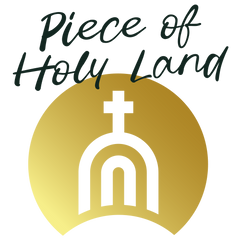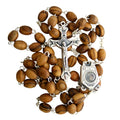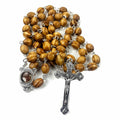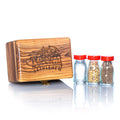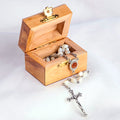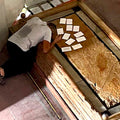Rebuilding the Church of the Holy Sepulchre and the Significance of the Olive Wood Cross
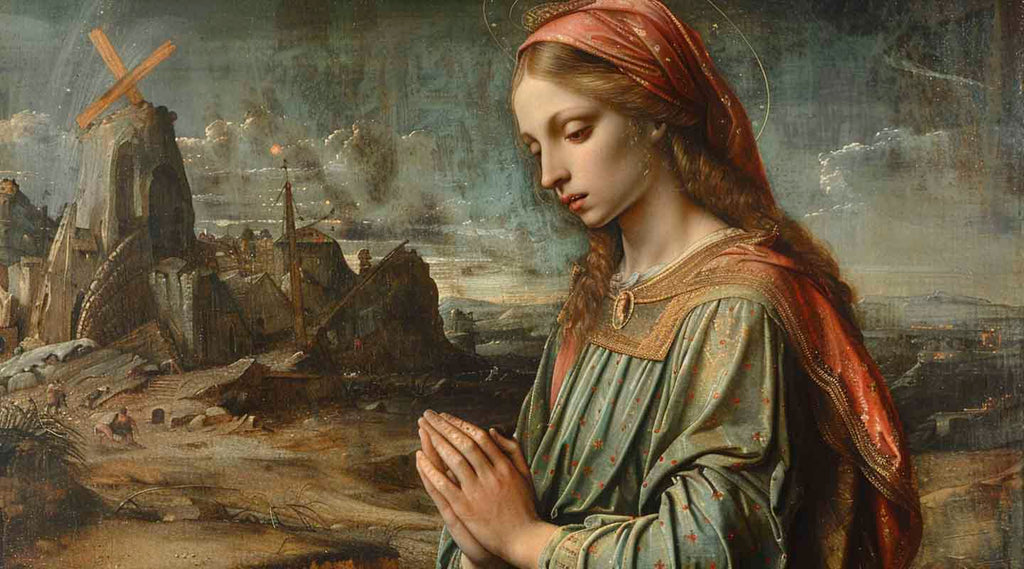
In the early 4th century, St. Helena, the mother of Emperor Constantine, embarked on a pilgrimage to the Holy Land that would shape the Christian world forever. Moved by her deep faith, she sought to uncover the sacred sites associated with Jesus’s life and passion. Among her greatest achievements was the identification and restoration of the site of Golgotha and the tomb of Christ, now preserved in the Church of the Holy Sepulchre. This church remains a testament to her devotion and to the power of faith.
St. Helena’s Pilgrimage and the Discovery of the True Cross
According to tradition, St. Helena was inspired by a vision to find the True Cross—the very wood on which Jesus was crucified. Her search led her to Jerusalem, where she uncovered the relics buried near the site of Jesus’s crucifixion. The discovery of the True Cross was a momentous event, signifying the intersection of faith and history. To commemorate this sacred finding, St. Helena commissioned the construction of a basilica that would enshrine both Golgotha and the empty tomb of Christ, making these holy sites accessible to the faithful.
The Construction of the Church of the Holy Sepulchre: A Monument of Faith
With the support of her son, Emperor Constantine, St. Helena began constructing the Church of the Holy Sepulchre in 326 AD. The church was designed to encompass the hill of Calvary, where Jesus was crucified, and His tomb, where He was resurrected. This monumental project involved clearing the remnants of a Roman temple and carefully preserving the sacred locations within a grand basilica.
The Church of the Holy Sepulchre was consecrated in 335 AD and quickly became a focal point for Christian pilgrimage. Pilgrims from across the world traveled to venerate the True Cross and pray at the site where Jesus conquered death. St. Helena’s efforts ensured that these sites would be preserved for future generations, allowing Christians to connect more deeply with the events of Christ’s passion and resurrection.
The Olive Wood Cross: A Symbol of St. Helena’s Legacy
The discovery of the True Cross by St. Helena has inspired countless replicas made from olive wood, a material that carries deep symbolic significance in the Holy Land. Olive wood, known for its beauty and resilience, symbolizes peace, wisdom, and the enduring presence of faith. An olive wood cross or olive wood crucifix serves as a tangible reminder of Christ’s sacrifice and the powerful faith of St. Helena.
Crafted from the ancient olive trees that dot the Holy Land, these crosses are not merely objects of devotion but also artistic expressions of faith. Each olive wood crucifix reflects the craftsmanship and spirituality of the artisans who carve them, imbuing each piece with a unique beauty. For believers, an olive wood cross is more than a symbol; it is a connection to the land where Jesus lived, died, and rose again, and a tribute to St. Helena’s unwavering dedication to preserving the Christian heritage.
The Church of the Holy Sepulchre Today: A Place of Prayer and Reflection
Today, the Church of the Holy Sepulchre stands as a living testament to St. Helena’s vision. It is a place where the faithful gather to pray, reflect, and celebrate the mysteries of Christ’s life. The church’s sacred spaces, including the Stone of Anointing, the hill of Golgotha, and the Aedicule that houses the tomb of Christ, offer pilgrims a unique opportunity to engage in profound prayer and reflection.
For many visitors, praying at the Church of the Holy Sepulchre is an experience of deep spiritual renewal. Whether kneeling at the site of the crucifixion or lighting candles near the tomb, pilgrims feel a powerful connection to the events of the Passion and Resurrection. Carrying an olive wood cross or crucifix from the Holy Land serves as a cherished reminder of this spiritual journey and as a symbol of hope and salvation.
The Importance of Prayer and Devotion
St. Helena’s legacy is not only reflected in the physical church but also in the devotion she inspired. The Church of the Holy Sepulchre continues to be a place where prayers are offered, miracles are sought, and faith is renewed. For those who cannot make the pilgrimage, an olive wood cross or olive wood crucifix can serve as a personal altar, a place to lay one’s heart before the Lord and seek His grace.
Praying with an olive wood cross, believers can feel closer to the sacred places of the Holy Land, reciting traditional prayers such as the "Our Father" and "Hail Mary" or offering their own personal petitions. These prayers, whether said in a church or at home, unite the faithful with the suffering, death, and resurrection of Christ, and remind them of the enduring love that flows from His sacrifice.
Conclusion: St. Helena’s Gift to the Christian World
St. Helena’s efforts to uncover and preserve the sacred sites of Jerusalem have left an indelible mark on Christian history. The Church of the Holy Sepulchre stands as a testament to her faith and determination, a place where the events of salvation history are remembered and celebrated.
For believers, owning an olive wood cross or olive wood crucifix is a way to keep this legacy alive, to carry a piece of the Holy Land into their homes, and to feel a connection to the life and sacrifice of Jesus Christ. May we continue to be inspired by St. Helena’s devotion, and may her legacy of faith guide us in our prayers and in our journey toward the divine.
St. Helena’s legacy, embodied in the Church of the Holy Sepulchre and the symbol of the olive wood cross, invites believers to deepen their faith and connect with the profound mysteries of Christ’s passion and resurrection.
SHARE:

